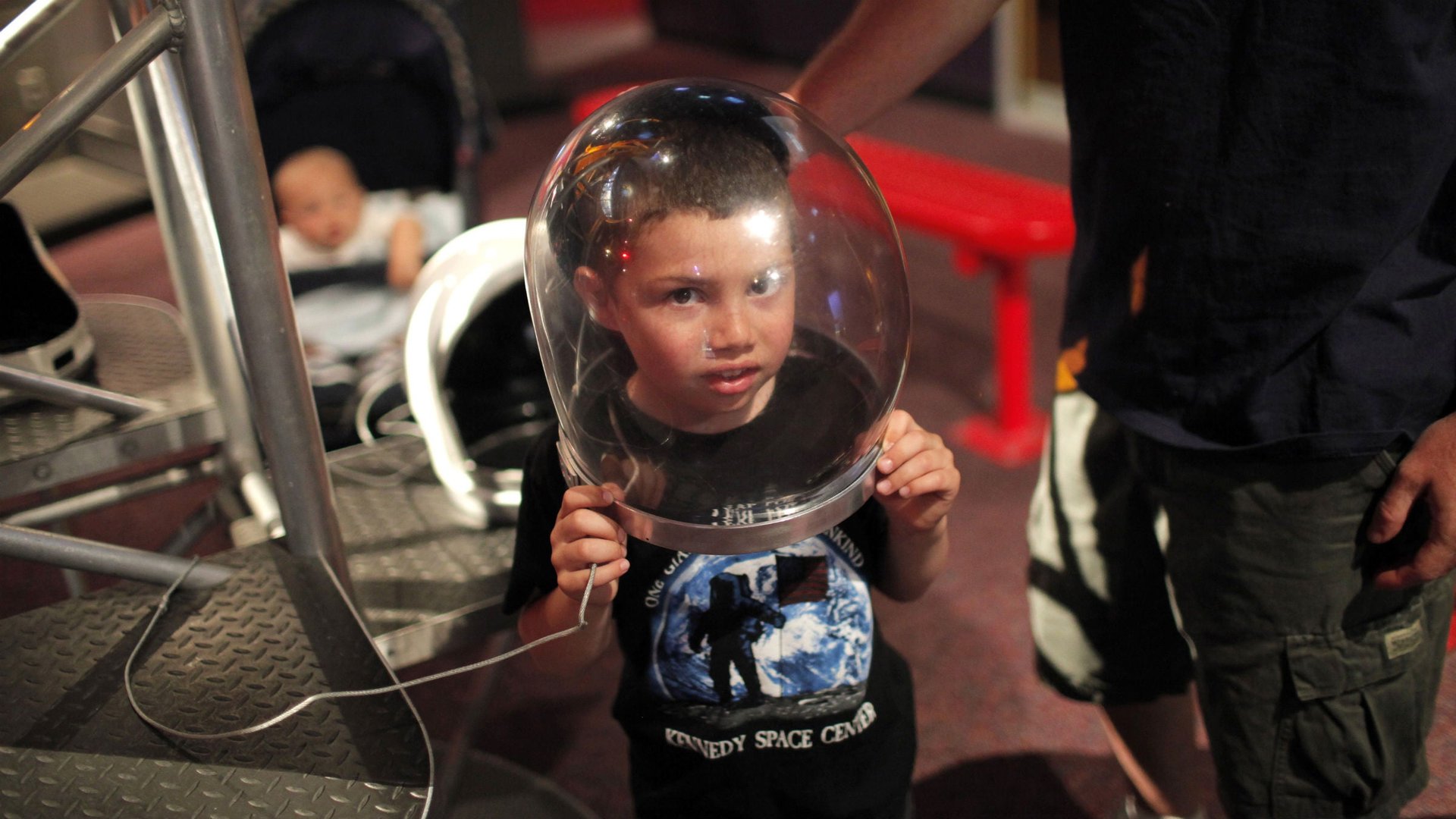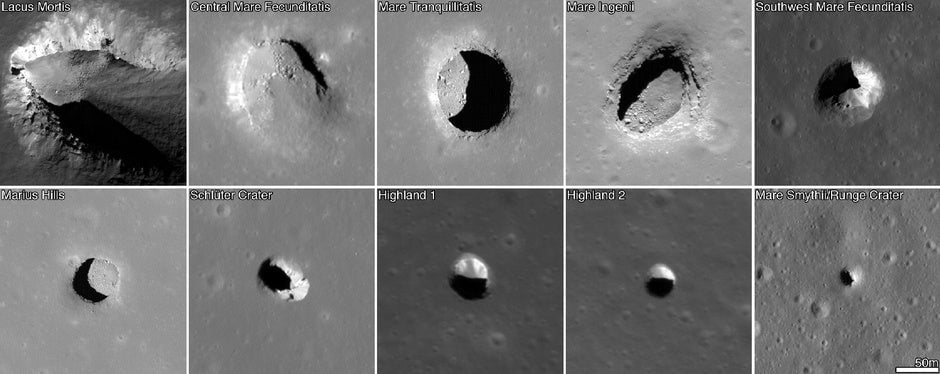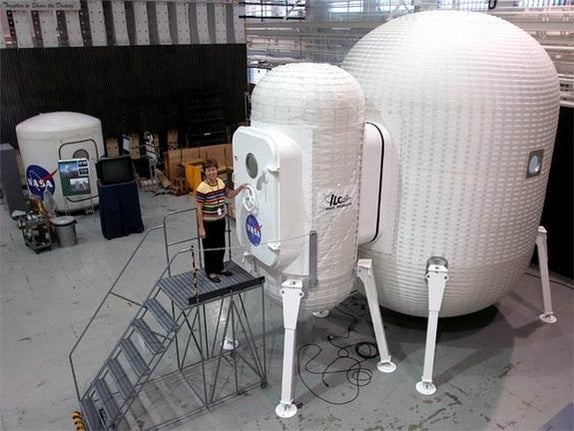Landing on the moon just got a whole lot easier
Advocates for manned moon explorations have been sorely disappointed by US space politics in recent times. Charles Bolden, president of NASA, declared last year that NASA “will not take the lead on a human lunar mission … probably in my lifetime.” Of a possible return, President Obama has quipped: “We’ve been there before.”


Advocates for manned moon explorations have been sorely disappointed by US space politics in recent times. Charles Bolden, president of NASA, declared last year that NASA “will not take the lead on a human lunar mission … probably in my lifetime.” Of a possible return, President Obama has quipped: “We’ve been there before.”
But new observations and extrapolations from NASA’s robotic Lunar Reconnaissance Orbiter offer a glimmer of hope for the lunatics out there. After scanning thousands of new high-resolution images, researchers found over 200 steep-walled pits on the moon that might be used to shelter future explorers. The pits—most of which were found inside larger craters—range in size from about 5 meters to more than 900 meters in diameter.

Dr. Mark Robinson, a professor at Arizona State University and a co-author of a paper on this research, says the pits could be have been formed like lava tubes on Earth. Molten rock flows beneath solidified crust and later drains away. Then part of the roof collapses, creating a surface opening.
“We know from our images that some of these pits extend back at least 25 meters,” said Robinson. “Some might go back even further. It would be so easy to make a habitat in there. You’d bring an inflatable structure, and inflate it. You’re ready to go in a few hours.”

Erecting a shelter (possibly like the one tested back in 2007, pictured above) inside the recesses of these pits would provide many protections for astronauts: from radiation, micrometeorite bombardment, and most of all, the wild swing of temperature from day to night. “It would save a lot of energy to not have to make up for that,” Robinson said.
But why even talk about putting people on the moon when the bigwigs say it’s out of the question? Don’t believe everything you hear, says Robinson. “Go down one level of all the people who work at NASA, and lots of folks are interested. We’re not going to Mars. After the politics settle down, we will be going back to moon.”
This post originally appeared at CityLab. More from our sister site:
Restaurants really can determine the fate of cities and neighborhoods